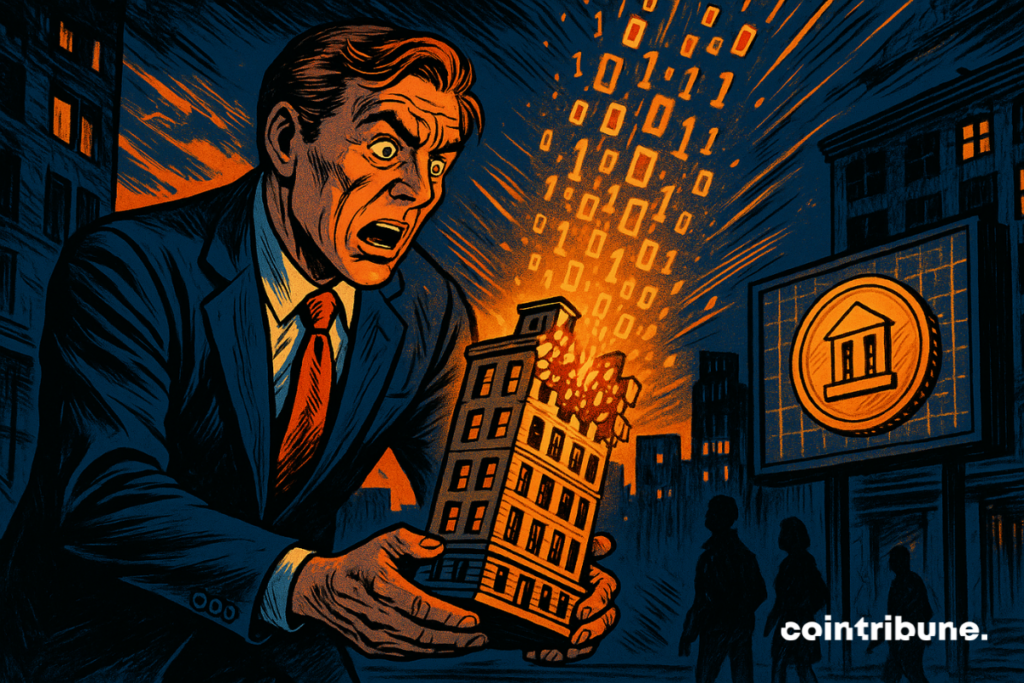How Tokenized Real Estate Is Disrupting Brick and Mortar in the Internet of Value Era
Forget deeds—your next property purchase might live on a blockchain. Tokenized real estate is slicing through red tape, turning skyscrapers into tradable crypto assets overnight.
Why it matters: Illiquid assets meet 24/7 markets. Suddenly that Miami penthouse trades like a meme coin (but with better fundamentals).
The breakdown:
- Fractional ownership goes global: Buy 0.001% of a Tokyo high-rise before your morning coffee
- Smart contracts replace lawyers: Escrow accounts? Automated. Title searches? On-chain.
- Yield farming meets rent checks: Stake your apartment token, earn passive income (unless the tenant pays in shitcoins)
The catch: Regulators still can’t decide if that REIT is a security or a JPEG. Meanwhile, Wall Street brokers are sweating through their bespoke suits.
Bottom line: The land registry of the future runs on Ethereum. And yes—some hedge fund just tokenized a parking lot as an NFT.

In brief
- Tokenization makes real estate accessible, fractional, and liquid.
- Several models emerge: DeFi, compliance, securities, or tokenized rents.
- Before investing, one must understand legal framework, governance, and liquidity.
What tokenization changes in practice
Gone are the six-figure entry tickets and endless paperwork: you can takeof exposure, receive your, resell on a, and, if needed,temporarily against your shares instead of selling everything.
The backbone: a legal vehicle holding the asset (SPV, trust, etc.), a(KYC/AML), athat records rights and flows… and a marketplace where these rights are traded.
Five approaches that are settling in
does not try to “sell rents”; the company tackles theand the. The idea: to put the deed and the title into an(title NFT, pilot recordings), to reduce delays, costs, and frauds. It’s less “immediate yield”, more, and ultimately a prerequisite for tokenization to be enforceable everywhere.
presents itself as anfeaturing(alongside other physical assets). The proposition: arepresenting its economic ownership, a secondary market, and progressive DeFi integrations. Past experiments around “real-backed” stablecoins nevertheless remind us thatremains central.
embraces the thesis: assets (or portfolios),for valuation, and use cases where onetheir real estate token to finance other needs. It is the most “composable” version of real estate with, in parallel, a strong requirement for the quality ofand.
pushes aapproach for(real estate, sometimes associated equity), with an infrastructure designed forand qualified investors. Less “mainstream” in the short term, but aligned with institutional expectations who view real estate on-chain through a legal lens before yield.
remains one of the most recognizable brands for “single-asset” rentals, notably for its education (cash flows) andthrough dedicated lending markets. A useful presence for comparing models, without dominating the landscape.
Three life scenarios that speak to everyone
- The long-term saver buys property shares in two or three cities, lets the rents fall in stablecoins, and sells when a personal project requires it.
- The freelancer or SME places their excess treasury in a tokenized portfolio, and borrows occasionally against those shares to cover a cash flow gap without disposing of the asset.
- The DeFi curious deposits their real estate tokens as collateral, prudently borrows a stablecoin, then repays as soon as income arrives, keeping a comfortable Health Factor.
What to check before buying
Blind spots not to forget
Tokenizationreal estate law nor.
(vacancy, unpaid rents, repairs) remain.andadd a tech LAYER to audit. Finally,: a secondary market often exists, but itsvaries; it is better to test abefore allocating more.
Tokenization, the future of real estate?
Tokenized real estate is coming out of the lab: some players bet on, others on(Propy), DeFi(CitaDAO), or(Realio).
Overall, it sketches a landscape where one can,, anddifferently. In this panorama,retains a landmark role, useful to measure the gap between promise and execution, but the momentum clearly comes from. For savers as well as builders, the rule remains the same: start small, read the, monitor your, and let thespeak rather than storytelling.
Maximize your Cointribune experience with our "Read to Earn" program! For every article you read, earn points and access exclusive rewards. Sign up now and start earning benefits.

